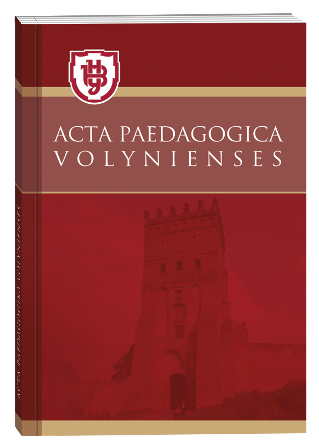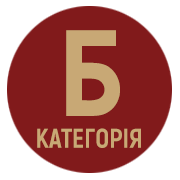ANALYSIS OF CURRENT EXPERIENCE OF APPLICATION OF NON-TRADITIONAL APPROACHES TO THE PROCESS OF SINGING DEVELOPMENT OF JUNIOR SCHOOLCHILDREN
DOI:
https://doi.org/10.32782/apv/2021.6.12Keywords:
non-traditional approaches, process of singing development, junior schoolchildrenAbstract
The article presents an analysis of modern experience in the application of non-traditional approaches to the process of singing development of primary school children As you know, creativity stimulates interest, which we considered above as the leading driving force of the educational process. Research is devoted to the problem of students' creativity in various types of musical activity, in particular in singing. According to the researcher, the main thing when learning any work is, of course, its content, character, emotional mood. Children overcome any difficulties only if they have penetrated deeply into the artistic image of the work. You should never waste time explaining the content, but read the text again, think about it. Sometimes it is necessary to read poems and tell a fairy tale, show reproductions of paintings, tell in detail about the era of creation of the work, about the author. A lot of time is spent on L. Shchetinina's classes talking about art, human destinies and characters, moral problems. Important in the author's work on the repertoire is that all the fun, cheerful songs children not just sing, but live them, complementing the singing with various movements of a dance nature in accordance with the image. After all, it has been proven that musicality develops through plastic. Of course, it is difficult to achieve the synchronicity of collective movements, but the beauty of movement, the reproduction of the inner feelings of children in it, the teacher is sure to achieve. The same applies to works of a calm nature. Students offer the most adequate movements of the torso, head, arms, improvise on the figurative-emotional theme of the choral work being studied.
References
Алексєєва Л. Викладання мистецтва в школі: нетрадиційні форми й методи. Мистецтво та освіта. 2012.
№ 3. С. 16–18.
Дьяченко В.К. Диалоги об образовании. Школьные технологии. 2001. № 4. С. 65–82.
Жорнова О. Сходинки до співацької майстерності. Мистецтво та освіта. 2002. № 1. С. 4–8.
Калюжна О. Я зробив сам! Творчість на уроках музики – радість для дітей. Мистецтво в школі. 2010. № 3. С. 9–10.
Лашина О.М. Розвиток творчої активності дітей на уроках музики. Мистецтво в школі. 2010. № 12. С. 28–29.
Літвінова О.К. Система музичного виховання молодших школярів. Мистецтво в школі. Фаховий сервер № 2. 2012. № 6. С. 161–168.
Мовчан О.О. Музично-співацьке виховання дітей у загальноосвітній школі за системою Д. Огороднова. Мистецтво в школі. 2014. № 9. С. 36–39.
Печерська Е.П. Уроки музики в початкових класах. Київ: «Либідь», 2001. 272 с.
Тищенко І.В. Розвиток емоційно-чуттєвої сфери учнів засобами інноваційних технологій. Мистецтво в школі. 2010. № 9. С. 20–23.
Ціос Л.Л. Архітектоніка сучасного уроку музичного мистецтва Мистецтво в школі. 2015. № 1. С. 16–19.
Шихова Г.І. Інсценізація пісні як засіб музичного виховання. Мистецька освіта та розвиток творчої особистості: зб. наук. пр. Рівне: Волинські обереги, 2016. Вип. 2. С. 311–320.







